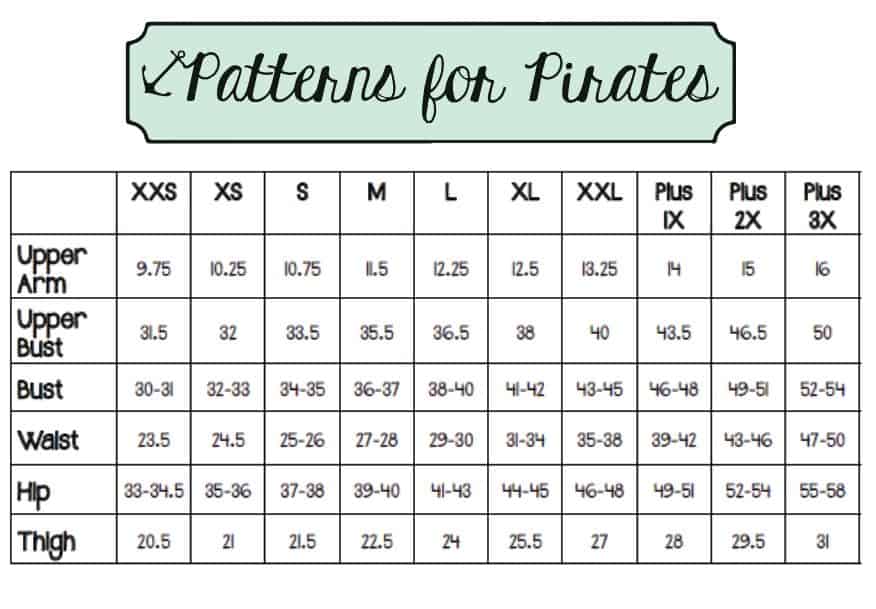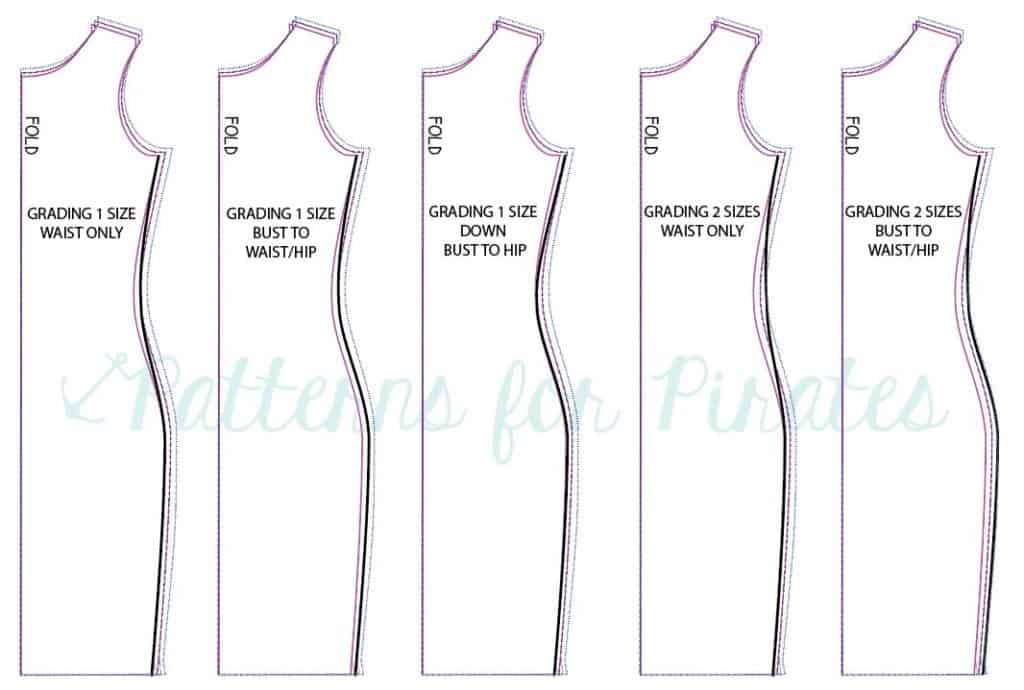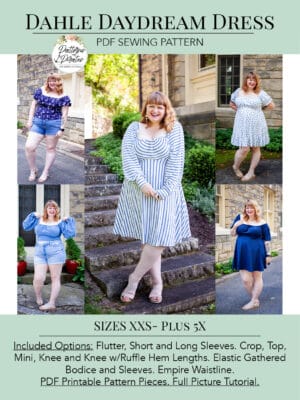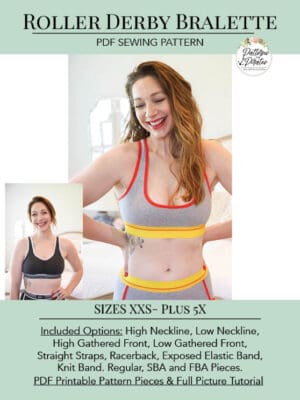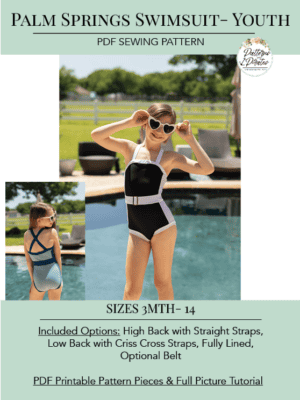
The classic basic silhouette of a raglan makes for a great base to play with fabric pairings and adding extra details to change them up a bit. I often look at boutique style for inspiration and the keyhole, scoop back has been a popular request among members in the P4P Facebook Group so we thought we’d share the how-to. I used the Slim Fit Raglan for my example, but this could easily be applied to any of the raglan patterns.
- Print and assemble your pattern as usual.
- Decide how low you would like your key hole and measure from the nape of your neck to desired length. I wanted the keyhole to sit just above my bra-line so went with 8″.
- Draw your keyhole curve, starting 1″ inside the edge where you would attach your sleeve down to the length you desire. I didn’t have a french curve handy, so actually used the curve from the armscye of the sleeve pattern piece as a guide. Cut out keyhole.
\
- Construct your raglan as usual.
- We are going to bind the keyhole with the traditional knit binding method but you could also do a t-shirt band (like the neckband in the pattern) as another option. Measure the keyhole length then multiply by 90% (this is your width measurement) You will stretch the binding just ever so slightly to fit the opening. This will help keep the keyhole from gaping and lie flat. Binding = 2″ x width.
- With right sides together, pin binding to keyhole, matching raw edges. Stitch with 3/8″ seam allowances.
- Press seam allowance up and fold binding down towards raw edge. Fold again, enclosing seam allowance.
Alternatively, if using a thicker fabric for your binding, you can skip the first fold and just fold the binding over enclosing the raw edge.
- Top-stitch with your favorite stretch stitch.
For the neckline, we will use the same binding method as shown above for the keyhole but need to take a few measurements to determine the length of binding you will use for the neckline only.
- Measure your neckline. Pictured: shirt on the fold so my neckline is 2 times the length.
Neckbands are typically smaller than the neckline to bring it in and prevent gaping. To determine the amount of the binding for the neckline, multiply the length by 85%. Neckline = 24″ (it looks like 23″ but actually measures 12″ on the fold) so my binding length for the neckline is about 20.5″. Total Binding = 2″ x 58″.
- Fold your binding in 1/2 to find the center point. My neck binding length is 20.5″ so we will measure out 1/2 to each side of center point. (or 10.25″ for my example). Mark end points.
- With right sides together and aligning raw edges, match center point and end points of neckline and binding. Stitch with 3/8″ seam allowance from endpoint to endpoint to endpoint (neckline only).
- Press seam allowance up and press binding down towards raw edge. Fold again, enclosing seam allowance.
- Continue folding towards the end of the tails.
- Top-stitch with your favorite stretch stitch.
- Tie a bow and your done!
If you’ve created your very own version of a Keyhole, Scoopback Raglan during P4P Raglan week, we would love for you to share it with us! Head over to the Facebook Group or share on Instagram. And be sure to use the tag #P4PRaglanWeek so we can find you!
Curious about what else has been happening during our raglan-loving week of fun?
Just take a look at our schedule!
Monday, September 19: Jolly Roger Raglan Pattern Update + Jolly Roger Add-On Pack Pattern Release
Tuesday, September 20: JRR Woven Fabric Hack
Wednesday, September 21: JRR Animal Faces Add-On
Thursday, September 22: Contrast Band Hack for Kangaroo Pockets
Friday, September 23: Women’s Keyhole / Scoopback Raglan Hack
Saturday, September 24: Off-The-Shoulder Raglan Hack
Sunday, September 25: Adding Stripes to Your Raglan Sleeves
























